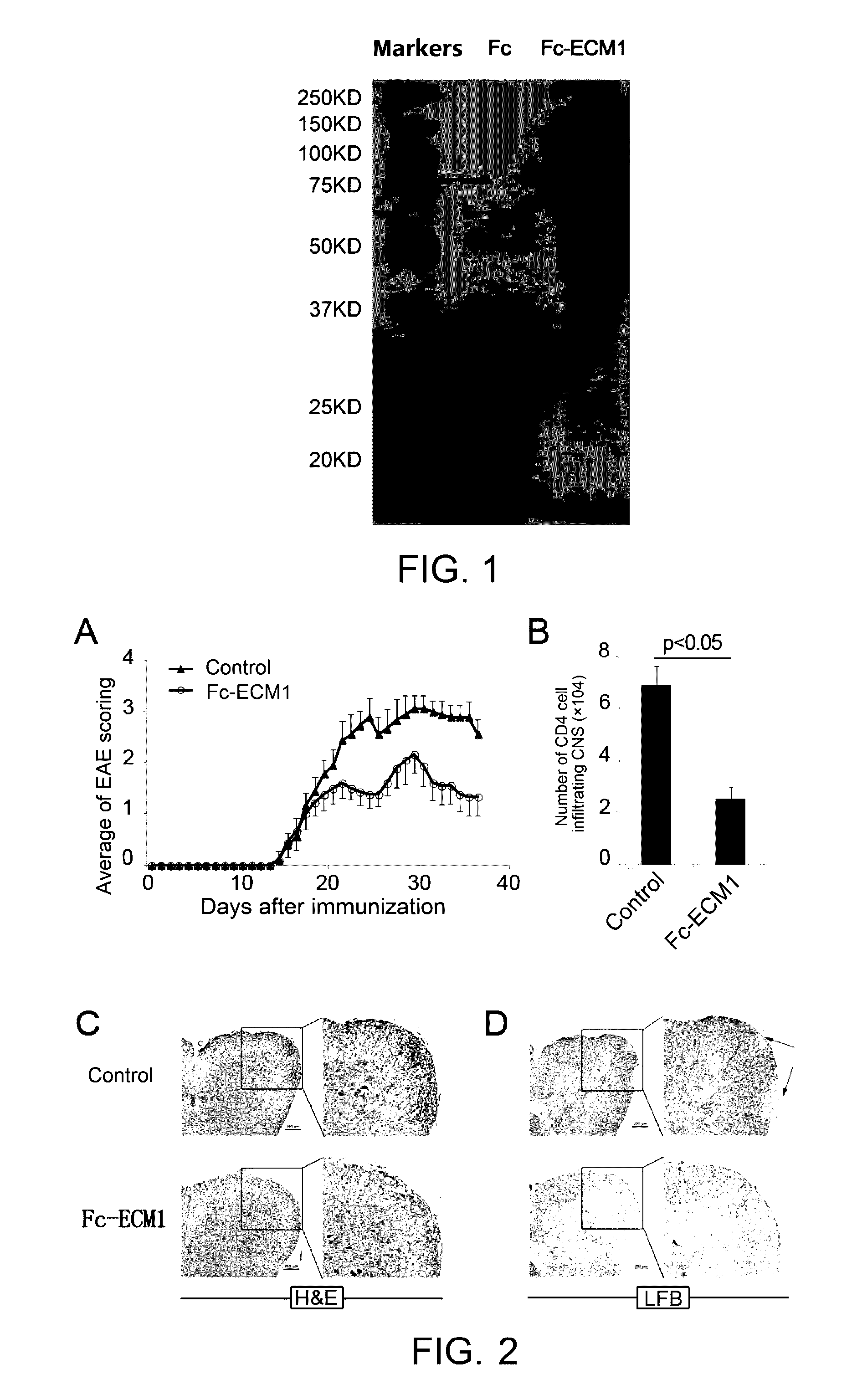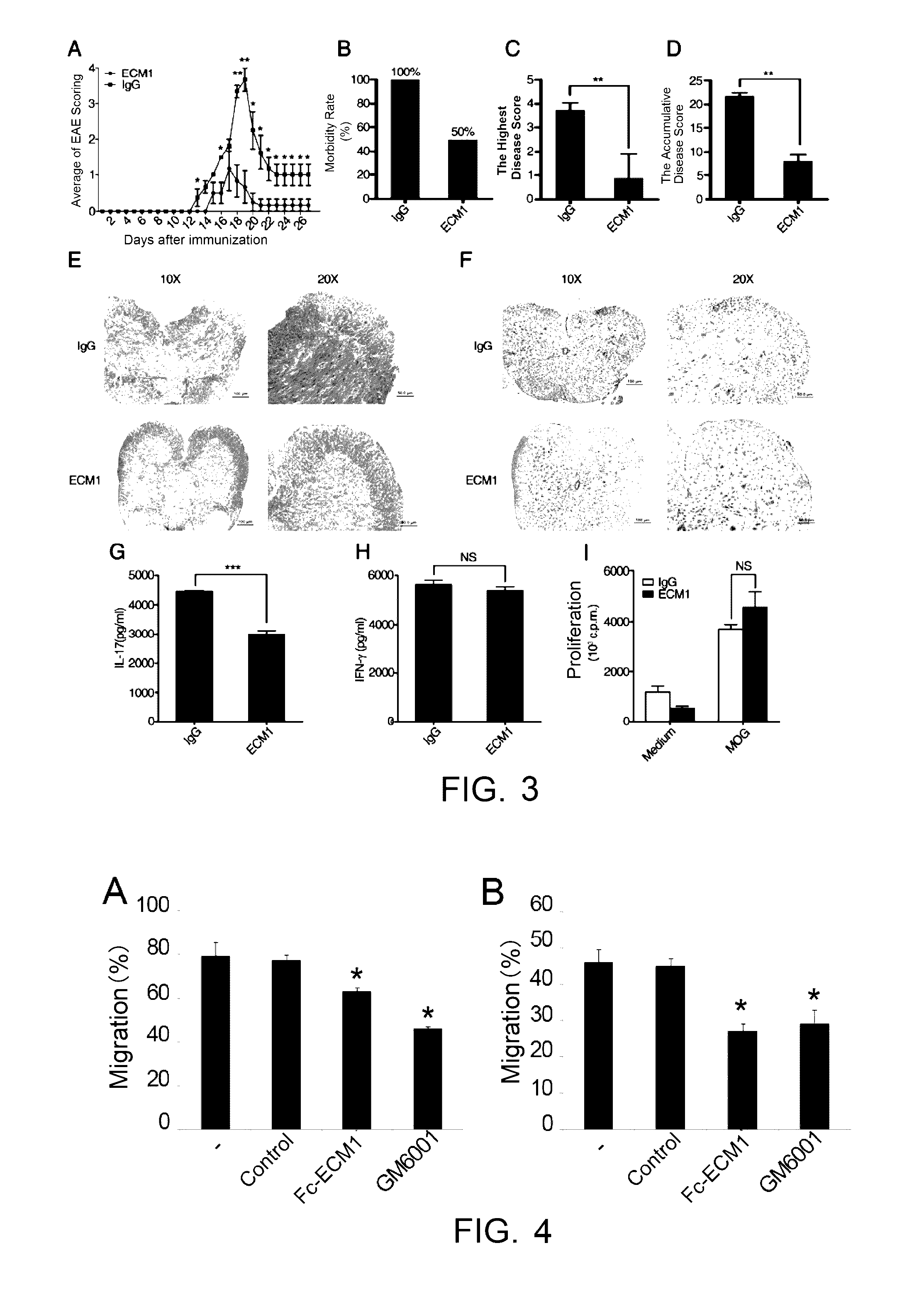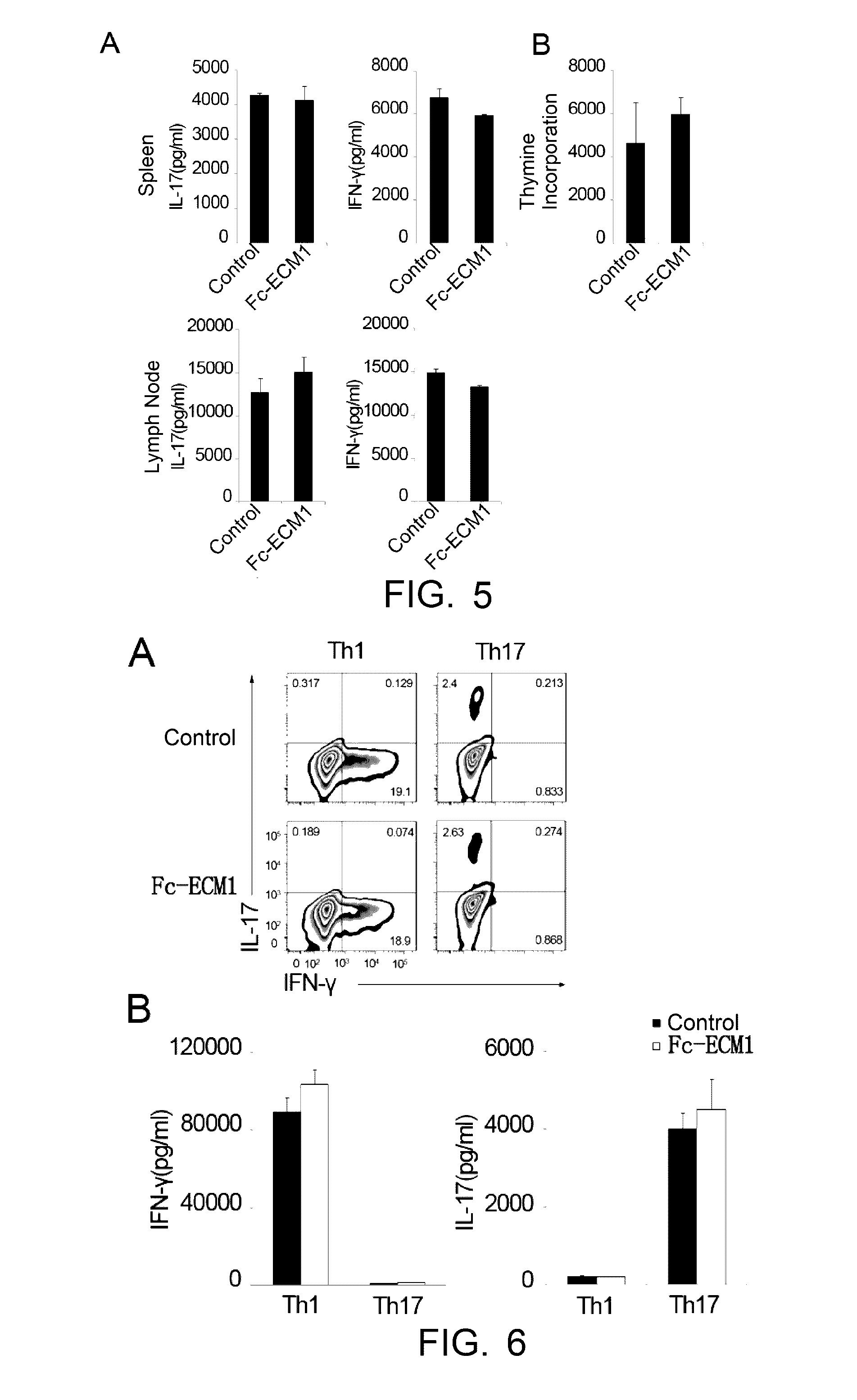Protein and use thereof in treating multiple sclerosis
a technology of multiple sclerosis and protein, applied in the field of biomedicine, can solve problems such as varied side effects, and achieve the effects of reducing side effects, reducing side effects, and reducing side effects
- Summary
- Abstract
- Description
- Claims
- Application Information
AI Technical Summary
Benefits of technology
Problems solved by technology
Method used
Image
Examples
example 1
II. Example 1
Fc-ECM1 Treatment at a Late Stage Effectively Alleviates EAE Symptom in EAE Mouse Model
[0099]Induced EAE model was built in 6-8 week-old C57BL / 6 female mice. The animals were randomly divided into groups of 9, subcutaneously immunized with MOG35-55 on day 0, intraperitoneally injected by PTX on day 0 and day 2, as detailed in the “Establishment of EAE model and administration” above. The mice were administered with Fc-ECM1 protein at the designated time points. The C57 mice receiving EAE immunization with MOG35-55 antigen were evenly divided into 2 experiment groups, and were respectively administered with the Fc-ECM1 protein and IgG protein as the control by tail vein injection on day 8, day 11 and day 14 (at the dosage of 100 μg / mouse). Clinical scoring was performed every day to study the effect of the Fc-ECM1 protein on EAE. According to EAE scores as shown in FIG. 2A, the severity of EAE disease in the Fc-ECM1 protein treatment group was significantly lower than th...
example 2
III. Example 2
Fc-ECM1 Protein Treatment at an Early Stage can Effectively Alleviate Morbidity in EAE
[0101]Induced EAE model was built in 6-8 week-old C57BL / 6 female mice. The animals were randomly divided into groups of 9. EAE was induced as described in “Establishment of EAE model and administration” above. The mice were administered with the Fc-ECM1 protein by tail vein injection on day 1, day 3, day 5 and day 7 after the EAE induction (at the dosage of 100 μg / mouse). The mice were treated with human IgG protein in the negative control group. On day 8 after the immunization, spleen and lymph node cells were isolated from 2 mice in each group. The cells were restimulated with MOG35-55+IL-23 for 72 h in vitro. The culture supernatant of the restimulated cells was collected, the levels of secreted IFN-γ and IL-17 were detected, and at the same time, pathogenic CD4+ T cell proliferation in the different groups was determined according to the [3H] proliferation assay said above. The ot...
example 3
IV. Example 3
Fc-ECM1 Inhibites T Cell Migration
[0103]The inventors studied the effect of the Fc-ECM1 protein on Th cell migration. Matrigel can mimic the basal lamina in the blood-brain barrier, and the Th cells need to cross the basal lamina to reach the focus. The Matrigel Invasion Assay was used to detect the migration potential of Th cells. Mouse CD4+ T cells were isolated and activated with 5 μg / ml coated anti-CD3 and 2 μg / ml soluble anti-CD28 to mature. On day 3 of the Th cell culturing, the groups were respectively subject non-treatment, addition of human IgG as the control, the Fc-ECM1 protein and GM6001, and cells on day 4 of the culturing were analyzed using Matrigel Invasion Assay. As shown by the Matrigel Invasion Assay, the Fc-ECM1 protein has an inhibitory effect on Th cell migration (FIG. 4A, *: p<0.05).
[0104]In view that the Fc-ECM1 protein was shown as can inhibit Th cell migration in vitro, the inventors further studied the protein's effect on pathogenic T cell mig...
PUM
 Login to View More
Login to View More Abstract
Description
Claims
Application Information
 Login to View More
Login to View More - R&D
- Intellectual Property
- Life Sciences
- Materials
- Tech Scout
- Unparalleled Data Quality
- Higher Quality Content
- 60% Fewer Hallucinations
Browse by: Latest US Patents, China's latest patents, Technical Efficacy Thesaurus, Application Domain, Technology Topic, Popular Technical Reports.
© 2025 PatSnap. All rights reserved.Legal|Privacy policy|Modern Slavery Act Transparency Statement|Sitemap|About US| Contact US: help@patsnap.com



